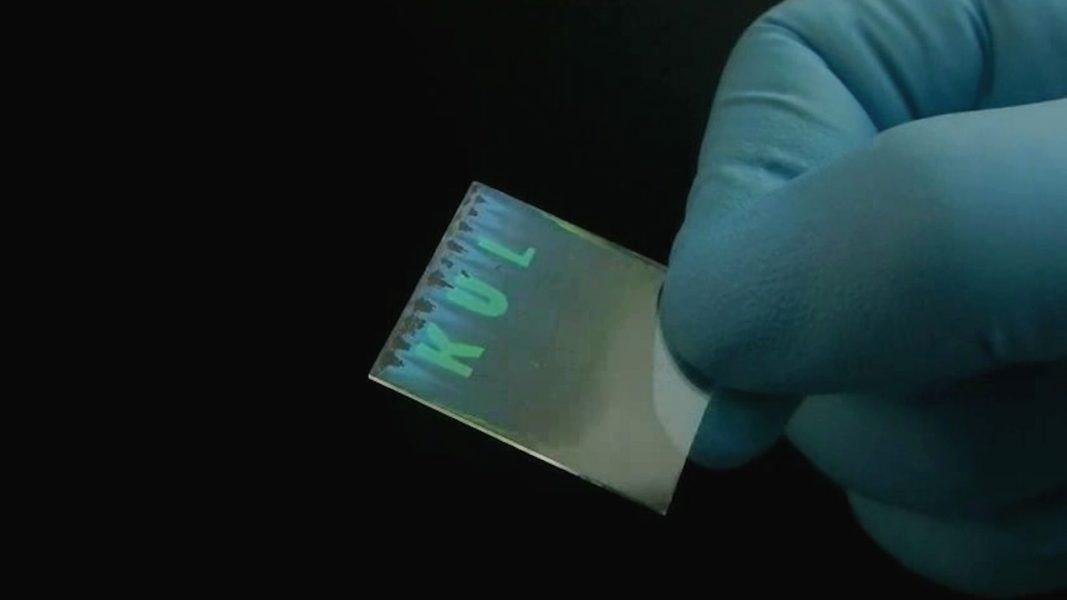In the wings of butterflies and the feathers of birds, or the textiles, cosmetics, and displays used in daily life, structural color plays an important role. External stimuli including humidity, temperature, and light irradiation can tune this color. This technique could be applied in anticounterfeiting, identification, and encryption devices.
In their article in Advanced Materials, Dr. Kuo Zhong from the University of Leuven (KU Leuven), Prof. Kai Song from the Chinese Academy of Sciences (CAS), Prof. Koen Clays from KU Leuven, and their co-workers from IMEC and Université de Bordeaux, develop a new colloidal photonic crystal (CPC)-based material that reveals a hidden pattern under the flow of humid air.
A hydrophilic “KUL” pattern was etched into a self-assembled layer of hydrophobic hollow silicon dioxide CPCs. Under ambient conditions, even up to 100% humidity, the pattern is optically invisible and appears blue like the unpatterned regions. Blowing human breath onto the sample induces a color change to green, revealing the “KUL” pattern. This color change is attributed to the rapid uptake of water into voids in the hydrophilic CPC patterned region, which increases its effective refractive index.
Dynamic humid response experiments showed that the invisible pattern can be revealed at humidities above 80%. By changing the humidity and flow rate, the color and the response time can be tuned.
The color change is fully reversible, even after 200 cycles, and the materials remained stable for more than 2 years.
To find out more about CPC-based materials for pattern encryption, please visit the Advanced Materials homepage.

















